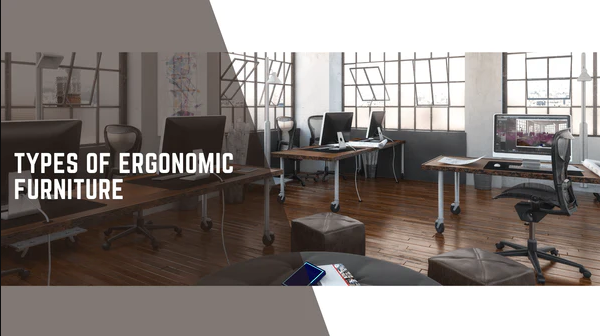
All Products
Explore the full range of Sunaofe's ergonomic furniture, crafted to enhance your...

Explore the full range of Sunaofe's ergonomic furniture, crafted to enhance your...

We are a generation who spends more time than ever before sitting in front of a screen. In the past, this might have been something they only did at work or while studying. Nowadays, however, we have screens everywhere – on our commute to and from work, when we’re at home, watching TV or even snacking with friends. It is estimated that the average American sits for 13 hours per day. We spend more than half of our days sitting down.
When it comes to ergonomics, there is a lot of science involved. And while you may not need to know all of the ins and outs of ergonomic furniture, it can be helpful to understand the basics. Here's a quick rundown of the science behind ergonomic furniture and how it can help you stay comfortable and productive at work.
Ergonomics is the study of how people interact with their environment. This includes everything from the way we sit in our chairs to the way we use our keyboards and mice. By understanding how our bodies work and what kind of stresses they're under, we can design furniture and equipment that helps us work more efficiently and with less strain.
One of the most important things to consider when it comes to ergonomics is posture. The way we sit or stand can put a lot of strain on our muscles and joints, which can lead to pain and fatigue. That's why ergonomic furniture is designed to support our bodies in the proper alignment, so we can avoid pain and discomfort.
Another important factor in ergonomics is using the right tools for the job. If we're constantly reaching for something just out of reach, or straining our eyes to see a computer screen, that can really take a toll on our bodies. The right tools will reduce the strain we feel, helping us work more comfortably and efficiently.

If you're looking to set up a more ergonomic workspace, there are a few different types of furniture you can consider. Here are a few of the most popular options:
Standing desks: A standing desk is a great way to reduce the amount of time you spend sitting down during the day. Standing desks come in a variety of sizes and styles, so you can find one that fits your needs.
Adjustable chairs: Adjustable chairs allow you to customize the height, back support, and armrests to fit your body. This can help reduce strain on your neck, back, and shoulders.
Keyboard trays: Keyboard trays attach to your desk and raise your keyboard and mouse to a comfortable height. This can help reduce strain on your wrists and arms.
Foot rests: Foot rests help keep your feet supported and at a comfortable height while you're sitting at your desk. This can help reduce strain on your legs and feet.
There are a lot of factors to consider when setting up your workspace, but ergonomics should be at the top of your list. By making sure your workspace is ergonomic, you can help prevent injuries and improve your overall comfort and productivity.
Here are a few tips for setting up an ergonomic workspace:
By following these tips, you can create an ergonomic workspace that will help you stay comfortable and productive.
When it comes to your ergonomic setup, one of the most important things to consider is your office layout. The way your furniture is arranged can have a big impact on your comfort and productivity levels. Here are a few tips for arranging your office furniture in an ergonomic way:
By following these tips, you can create an ergonomic office layout that will help you work more comfortably and efficiently.
1. What is ergonomic furniture? Ergonomic furniture is designed to minimize discomfort and improve productivity by accommodating the user's body and promoting proper posture. Common features include adjustable height, lumbar support, and arm rests.
2. Why is ergonomic furniture important? Proper ergonomics are crucial for preventing musculoskeletal disorders (MSDs) such as carpal tunnel syndrome, which can lead to chronic pain and disability. MSDs are caused by repetitive motions and poor posture, both of which can be alleviated by using ergonomic furniture.
3. How do I know if my furniture is ergonomic? Look for furniture that allows you to adjust the height, back support, and armrests to find a comfortable position. Many office chairs and desks have these features, but make sure to try them out before you buy to ensure they work for you.
4. Where can I find ergonomic furniture? You can find ergonomic furniture at many office supply stores or online retailers. When shopping online, be sure to read customer reviews to ensure you're getting a quality product.
5. How much does ergonomic furniture cost? The cost of ergonomic furniture varies depending on the item. We offer a selection of high-quality ergonomic office furniture from top brands at a great price.
6. How do I know if an ergonomic chair is right for me? If you are looking to reduce the strain on your body while seated, then an ergonomic chair is right for you. It will help maintain proper posture and alignment while reducing pressure points that can cause pain and discomfort over time.


Be the first to know about new collections and exclusive offers.
